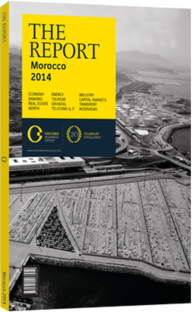Salafin: Banking
COMPANY OVERVIEW: Salafin is the number three operator in the Moroccan consumer credit market in terms of net banking income, outstanding loans and net income. Salafin operates in two main areas: the auto financing business, one of the less risky segments in the consumer credit market, which represents 53% of its total outstanding loans, and in the personal loans segment, which represents 47%. The company also started a fee business activity in 2011. This branch consists of loans collection for BMCE Bank (the majority shareholder of Salafin), of the management of BMCE’s personal loans applications, and of the set-up of auto loans and collection platforms across Africa for the accounts of Bank of Africa (a subsidiary of BMCE Bank). As for ownership, BMCE holds 75% of Salafin, pension funds hold 5% and a free float represents almost 18%.
Over the first half of 2013, Salafin saw a decrease in its leasing production (-13% versus -2% for the industry), standing at Dh560m (€49.7m) due to the counter-performance of car sales in the national market. Personal loans production grew by 5% to Dh255m (€22.6m), versus -1.0% for the industry. Outstanding loans thus dropped 3% to Dh2.3bn (€204.2m), versus Dh2.4bn (€213.1m) at end-2012.
Despite a slight drop (-2.1% ) in net banking income to Dh106m (€9.4m), Salafin’s revenues increased by 7.3%, standing at Dh138m (€12.3m), thanks to the good performance of the fee business activity, which increased by 57.5% and generated revenues of Dh32m (€2.8m). Gross operating income grew by 4.3%, due to higher general operating expenses (+14.0%) with a cost-to-income ratio of 33.3%, versus 31.4% in H1 2012. Finally, net income stood at Dh43.6m (€3.9m), increasing by 0.8% despite a higher cost of risk, which grew by 7.9% to Dh21m (€1.9m). Return on equity, for its part, stood at 15.5%.
STRATEGIC DEVELOPMENT: In 2013, we forecast a slight decrease of outstanding loans (-1.1%), due to an 8% decrease in personnel loans combined with an expected 5.0% growth in auto loans. In 2014, outstanding loans should grow by 6.5%, thanks to a forecast recovery of personal loans, and given the dynamic production of auto loans, which should benefit from the positive impact of the Auto Expo show in May 2014 held in Casablanca.
Salafin’s revenues should grow by 1.8% in 2013 as a result of lower net banking income (-6.2%) and of a rising contribution from its fee business activity (+35.0%). In 2014 revenues should increase by 9.3%, driven by the recovery of net banking income (+6.2%) and by a further rise of revenues generated by the fee business activity (+10.0%). In 2013 and 2014, we expect a cost-to-income ratio of 33.0% and 32.5% respectively, which will allow gross operating income to grow by 0.8% and 10.1%. In 2013, the net income should stand at Dh93.4m (€8.3m), growing by 1.4%, thanks to a lower cost of risk. In 2014, we expect a net income of Dh105.5m (€9.4m) – a growth rate of 12.9%. Salafin is our preferred stock in the consumer credit sector. We recommend to buy this stock with a target price of Dh672 (€59.14) per share given the following points:
• Our current target price does not account for the impact of the fast-growing fee business activities, which made up Dh51m (€4.52m) of its revenues in 2012 and 21% of its total operating income;
• After several years of a difficult context for the consumer credit market, Salafin’s net banking income and net income are expected to recover starting 2013, especially as loans production has already recovered in 2012;
• Salafin enjoys the best return on assets and cost-to-income ratio among listed consumer credit companies. The company also has the necessary capital structure to capture any external growth opportunities that arise; and
• Finally, Salafin has one of the most attractive dividend yields on the Casablanca Stock Exchange.
For 2013, we expect the figure to reach almost 7%.
You have reached the limit of premium articles you can view for free.
Choose from the options below to purchase print or digital editions of our Reports. You can also purchase a website subscription giving you unlimited access to all of our Reports online for 12 months.
If you have already purchased this Report or have a website subscription, please login to continue.

